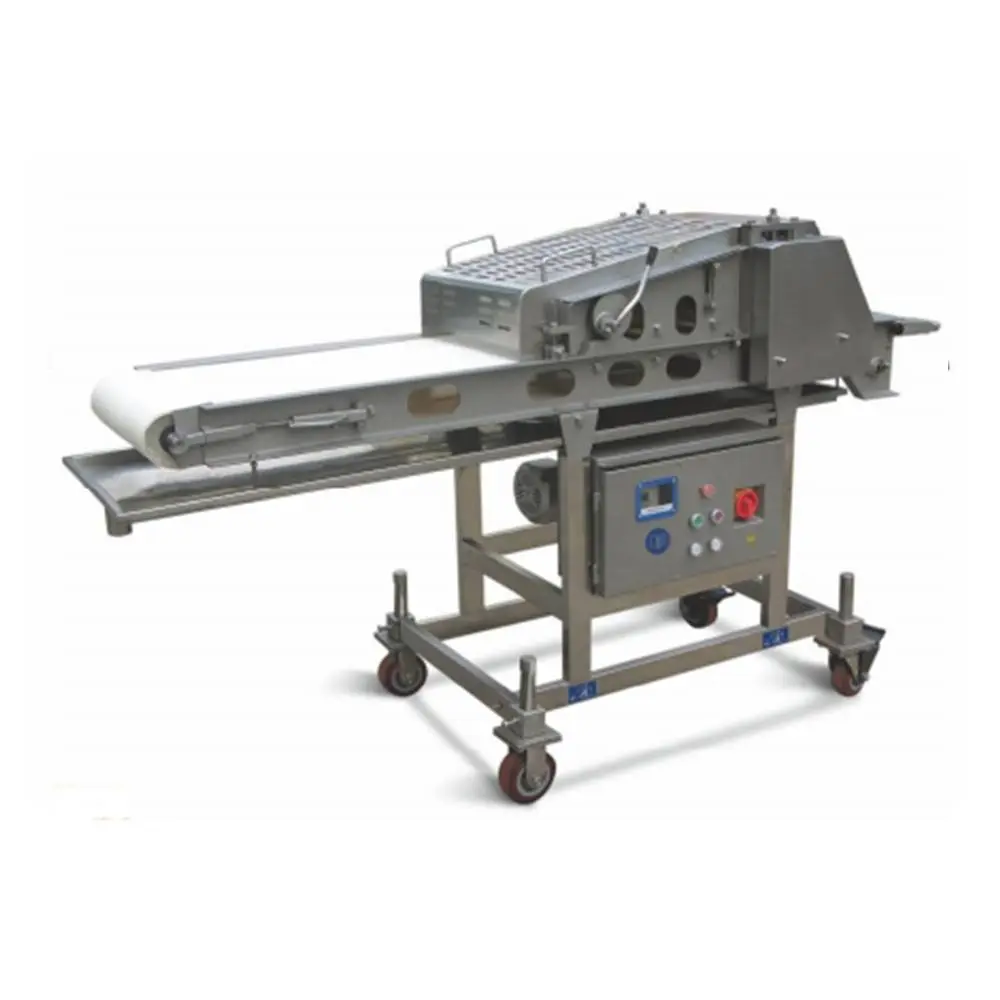
Aug . 10, 2024 11:45 Back to list
Efficient Meat Slicing Tools for Home Chefs and Professional Kitchens alike for Perfect Cuts
The Versatility and Importance of Meat Slicers in Food Preparation
In the culinary world, efficiency and precision are paramount, especially when it comes to food preparation. One tool that has become indispensable in many commercial kitchens and even home setups is the meat slicer, often referred to as a meat cutter. This device is specifically designed to slice meats, cheeses, and other food products with remarkable precision, speed, and ease.
Understanding the Meat Slicer
A meat slicer is an electric or manual device that can quickly and uniformly slice various types of meats with varying thicknesses. The device typically consists of a motor, a circular blade, and a feeding platform where the meat is placed. The blade rotates at high speeds, allowing for clean cuts that retain the texture and presentation of the meat. The ability to adjust the thickness of the slices makes meat slicers particularly versatile, accommodating everything from paper-thin prosciutto to thicker cuts for sandwiches and platters.
Benefits of Using a Meat Slicer
1. Consistency One of the most significant advantages of using a meat slicer is the uniformity of the slices. In both restaurants and catering services, consistent slice thickness is crucial for presentation and cooking times. Chefs can ensure that each slice of meat looks as good as it tastes, which is particularly important for dishes served to customers.
2. Time Efficiency Manual slicing can be time-consuming and labor-intensive. Meat slicers dramatically reduce the time required for slicing large quantities of meat, making them essential in busy commercial kitchens. This efficiency allows staff to focus on other culinary tasks without sacrificing quality.
3. Safety While knives can be dangerous for inexperienced users, meat slicers are designed with safety features that minimize the risk of injury. Many models come with protective guards and automatic shut-off mechanisms, making them safer to operate, particularly in high-paced kitchen environments.
meat slicer cutter

4. Versatility Beyond Meat Although the name suggests a primary function of slicing meat, these machines are equally effective at slicing cheeses, vegetables, and bread. This versatility makes them a valuable addition to any kitchen, whether for preparing charcuterie boards, sandwich setups, or even for home meal prep.
Types of Meat Slicers
There are several types of meat slicers available, each designed for specific tasks and user needs. Commercial slicers are robust and built for high-volume use, often featuring larger blades and more powerful motors. They are commonly found in delis, butcher shops, and large kitchens. On the other hand, home meat slicers are typically smaller, less powerful, and designed for occasional use, providing home cooks the ability to prepare meals with a professional touch.
Maintenance and Care
To ensure that a meat slicer functions optimally, regular maintenance is essential. Cleaning the blade and components after each use prevents the buildup of bacteria and food particles, which is vital for food safety. Additionally, sharpening the blade periodically ensures that it cuts smoothly and efficiently, prolonging the lifespan of the machine.
Conclusion
In conclusion, meat slicers are an invaluable tool in both commercial and home kitchens, providing efficiency, precision, and safety in food preparation. As culinary trends continue to evolve, the importance of tools like the meat slicer will only grow, enabling chefs and home cooks alike to create dishes that are as visually appealing as they are delicious. Whether preparing a gourmet meal or simply slicing ingredients for a family lunch, the meat slicer remains a critical companion in the culinary journey.
Latest news
-
[Product Name]-[Company Name]|[Core Function 1]&[Core Function 2]
NewsJul.13,2025
-
SmartFlow 3000 Series-Industrial Automation Solutions|AI Analytics&Energy Efficiency
NewsJul.13,2025
-
NextGen Equipment Series-IndustrialTech Solutions|Smart Automation&Real-Time Analytics
NewsJul.12,2025
-
Smart Irrigation System - Example Corp | Water Conservation, AI-Driven Efficiency
NewsJul.12,2025
-
Chicken breast meat slicer
NewsMar.07,2025
-
Meat Bowl cutter for LAB
NewsMar.07,2025